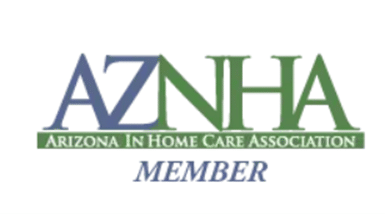Article taken from The Senior Spirit newsletter
Although the good old days of seeing a family doctor are disappearing, health care is evolving so quickly that it could cause vertigo. Health clinics in local retail malls are increasing, and emergency centers are moving in next to grocery stores and hair salons. Meanwhile, hospitals are creating emergency rooms just for seniors.
A more significant change is the new emphasis on preventive medicine. Partly spurred by rising health care costs and the Affordable Care Act, new incentives encourage health care providers to focus more on prevention. Plus, in this age of electronic communication, your primary care physician can treat you at home, even if she doesn’t make house calls.
Concierge Medicine
Those who want more personal care from their physicians can use a “concierge” service. For an annual or monthly fee, ranging on average from $1,200 to $5,000 per year paid out-of-pocket, your physician is available at any time and can coordinate your health care. Doctors who practice in expensive areas tend to charge the highest fees; a high fee may also mean that they limit their practice to fewer patients to give each patient extra attention to discuss their health and any concerns and care needs. Concierge medicine is appealing to those who want a strong relationship with their doctor and who don’t want to wait to schedule an appointment or talk to their physician.
New Health Care System
One big change to the traditional health care system is the Accountable Care Organization (ACO), a network of doctors and hospitals that shares responsibility for providing coordinated care to patients with the goal of limiting unnecessary spending. At the center of each patient’s care is a primary care physician who coordinates the patient’s care with other providers.
In traditional medical care, hospitals and health care providers receive payment based on each service, visit or procedure provided, known as fee-for-service. Under the new system, the ACO is designed to pay doctors and hospitals based on how successfully they treat patients and keep them out of the hospital. ACOs must meet benchmarks for health care quality, focusing on prevention and managing patients’ chronic diseases while lowering costs with fewer hospital admissions, redundant tests and unnecessary treatments.
Medicare, the nation’s largest health insurer, has designated “Pioneer Accountable Care Organizations” and tracked their performance on 33 quality and performance measures, from patient satisfaction to hospital readmission rates to how reliably people with asthma, for example, get the care they need.
Last summer, the Centers for Medicare & Medicaid Services announced positive and promising results from the first performance year of the Pioneer ACO Model. Pioneer ACOs earned $76 million by providing coordinated, quality care and saved nearly $33 million to the Medicare Trust Funds.
Neighborhood Medicine
Another new development in health care provides easy access for consumers. Retail clinics—medical clinics located in pharmacies, grocery stores and “big box” stores, such as Target—are rapidly increasing across the country. They provide care for the more every day aches, pains and common conditions—such as bronchitis and vaccinations—typically delivered by a nurse practitioner. While you’ve long been able to get a flu shot or get treated for a sore throat, many established retail clinics, such as Walgreens’ Healthcare Clinic, have expanded into diagnosing and treating chronic illnesses.
With longer hours and no appointment needed, retail clinics fill a gap between your regular physician and costly emergency room care, are often more conveniently located and accept the same insurance that your regular health care provider would.
Free-standing emergency centers are the newest addition to convenient health care options and are located in the same shopping centers as the retail medical clinics. Both accept insurance. These free-standing centers offer emergency care and promise a faster in-and-out time than hospital emergency departments (EDs). In Washington State, emergency centers treat, diagnose and discharge patients within about 90 minutes, as opposed to the state’s average hospital ED wait of four hours. Costs are comparable to those of traditional EDs—at least for the patient. However, emergency centers are also generating complaints, because many people confuse them with urgent care centers, which are a form of retail medical centers for those requiring immediate care, but not serious enough to require an ED visit. Neighborhood EDs charge more than urgent care centers, because by law they must be equipped for emergencies, with special equipment and certified personnel. Some people who are treated for minor ailments, such as an allergic reaction, at a free-standing emergency center are shocked to later see huge bills. And insurance companies aren’t happy either, fighting large bills in court.
Medicine by Electronic Means
Although telemedicine has been around for a while, especially for rural clients far from medical centers, it’s becoming more widely used. For example, patients with chronic illnesses can be monitored at home, with their medical data sent to the health care provider, who can often prevent a trip to the hospital. Homebound patients can have their blood glucose or heart ECG monitored and data sent to a home health agency or a remote diagnostic testing facility for interpretation.
With telemedicine, various applications and services, including two-way video, smart phones and wireless tools, electronically communicate medical information between physical sites. For example, a primary care physician and specialist can together determine a diagnosis using interactive video or the transmission of diagnostic images, vital signs and/or video clips along with patient data.
Even mental health therapists can practice using telemedicine. Carolinas Medical Center in Charlotte, N.C., recently introduced a system-wide telepsychiatry program, which provides a mental-health evaluation without moving the patient to a psychiatric facility.
Senior Emergency Rooms
With a growing senior population, hospitals are taking steps to cater to the medical needs and sensibilities of aging baby boomers and their parents, with emergency rooms specifically designed for the elderly. They feature nonskid floors, rails along the walls, reclining chairs for patients and thicker mattresses to reduce bedsores, natural lighting throughout common areas, reduced chaos and noise, and staff specifically trained in geriatric emergency medicine.
Hospitals noticed that emergency rooms were not meeting the needs of the elderly. Older patients’ conditions are often more complicated because these patients may be taking many medications, have more than one condition, and are sometimes unable to clearly express what is wrong.
Hospitals also have strong financial incentives to focus on the elderly. People age 65 and older account for 15 percent to 20 percent of emergency room visits, hospital officials say, and that number is expected to grow as the population ages. At Mount Sinai Hospital in New York, volunteers interact with older patients to help keep them alert. An artificial skylight, which turns dark at night, is intended to combat “sundowning”—agitation and confusion at the end of the day. An iPad allows patients to have a two-way video conversation with a nurse, or touch the screen to ask for lunch, pain medication or music.
www.blessingsforseniors.com
Blessings for Seniors makes it possible for older adults to enjoy the comforts of their own home for as long as possible. We offer a customized care plan that includes services such as; Hourly Senior Home Care, 24-Hour Home Care, Dementia Care, Personal Care and Companion Care. Also ask us about our Veterans’ Home Care program.
- What Does a Personal Hygiene Plan Look Like for Aging Adults? - May 19, 2025
- Managing Routines to Manage Health - May 8, 2025
- The Benefits Of 24-Home Care For Seniors - April 23, 2025


